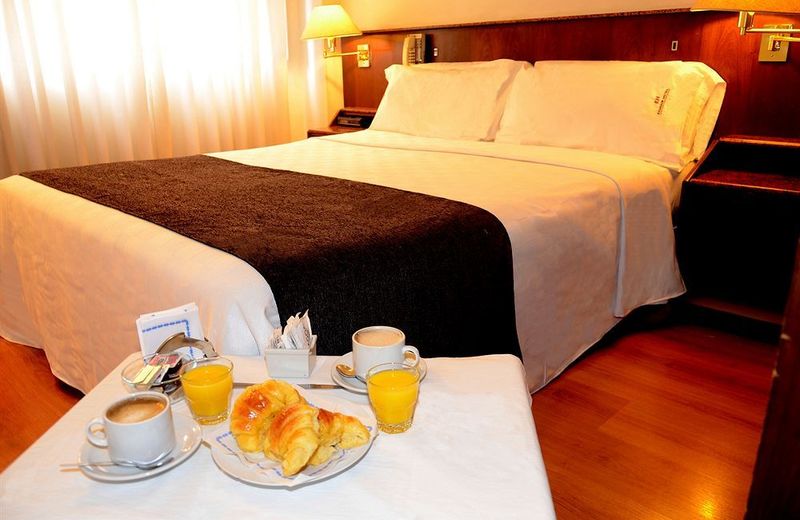Why choose this Buenos Aires tour ?
We invite you to visit Buenos Aires through this Walking tour of approximately 3 hours, in which you will discover the most important points of the historic center of the city. Maximum group of 10 passengers.
Spanish / Portuguese / English guide
Departures: Friday / Saturday AM
Includes breakfast at “the 36 billiards” COFFEE WITH MILK AND MEDIALUNAS
Make the most of your Buenos Aires adventure
What makes Walking Tour centro historico with breakfast at traditional bar a unique experience ?
La Plaza de Mayo es la más antigua de Buenos Aires y escenario de todos los acontecimientos políticos más importantes de la historia argentina, a excepción de la Declaración de la Independencia.
Ubicada frente a Plaza de Mayo, en la intersección de la calle San Martín y la avenida Rivadavia, la Catedral Metropolitana es la principal sede de la Iglesia Católica de la Argentina. Además de estar ubicada en una zona clave de la Ciudad de Buenos Aires, guarda una larga historia de sinsabores en su construcción. El edificio actual es la sexta construcción que se realizó en este lugar desde la segunda fundación de la Ciudad de Buenos Aires.
Ubicado en las cercanías de la Casa Rosada, en el barrio de San Nicolás, el Banco de la Nación es un edificio de características monumentalistas.
Entre 1857 y 1888 funcionó aquí el primer Teatro Colón, pero su historia como banco se remonta al año 1891, cuando el sistema financiero argentino estaba en crisis. Para apoyar a los productores agrícolas y ganaderos, el Gobierno Nacional fundó este banco con capital estatal. Hoy, el Banco de la Nación Argentina cuenta con más de 500 sucursales en el país y en Latinoamérica, Estados Unidos y Europa.
El Cabildo de Buenos Aires, sede de la administración colonial, ocupa el mismo lugar desde 1580, pero su edificio sufrió sucesivas modificaciones. Las primeras referencias del Cabildo provienen de principios del siglo XVII. Para 1608, tenía paredes de adobe y techo de paja. El interior se encontraba dividido en dos: un salón para reuniones y otro que funcionaba como cárcel. Las tejas llegaron dos años más tarde y, para mediados de siglo, el Cabildo tenía balcón y torres de madera y barro. Para 1725, el edificio estaba en muy mal estado y se decidió demolerlo. A cambio comenzó a levantarse uno nuevo, a partir de un proyecto del italiano Andrés Blanqui. Así, comenzaba a tomar forma el Cabildo tal como lo conocemos hoy.
a Iglesia de San Ignacio es la más antigua de la Ciudad, construida por los jesuitas entre 1686 y 1722, y forma parte de la Manzana de las Luces.La iglesia es obra de los arquitectos jesuitas Krauss, Bianchi y Prímoli y por debajo corre parte de los túneles construidos en la época colonial, utilizados para la defensa y el contrabando.
La Casa Rosada es un palacio ubicado frente a la Plaza de Mayo que funciona como sede del Gobierno Nacional. Este imponente edificio de color rosado ocupa el predio donde se erigió en 1580 el Fuerte de Buenos Aires. Fue la residencia de virreyes españoles y luego albergó, con algunas reformas, a las autoridades de los sucesivos gobiernos patrios. El actual edificio es el producto de la fusión de dos construcciones anteriores: la sede presidencial y el Palacio de Correos (en la esquina de Hipólito Yrigoyen y Balcarce).
Tour Description & Additional Info:
- Public transportation options are available nearby
- Not recommended for travelers with spinal injuries
- Suitable for all physical fitness levels
Options To Choose for Your Trip:
- Walking Tour centro historico with breakfast at traditional bar
Add
Walking Tour centro historico with breakfast at traditional bar Inclusions:
Included with Your Ticket
- Includes breakfast at “the 36 billiards” COFFEE WITH MILK AND MEDIALUNAS
- Waking tour
Not Included
- Transportation
Trending Buenos Aires Nearby Tours Likely To Sell Out
Special Instructions:
- This Tour is Provided by Azul Latina Travel.
- Tour Timezone & Starts at America/Argentina/Buenos_Aires.
- Mobile or paper ticket accepted.
- For a full refund, cancel at least 24 hours before the scheduled departure time.
- Minimum 1 Travelers is required to book.
- Maximum 10 Travelers is accepted for booking.










